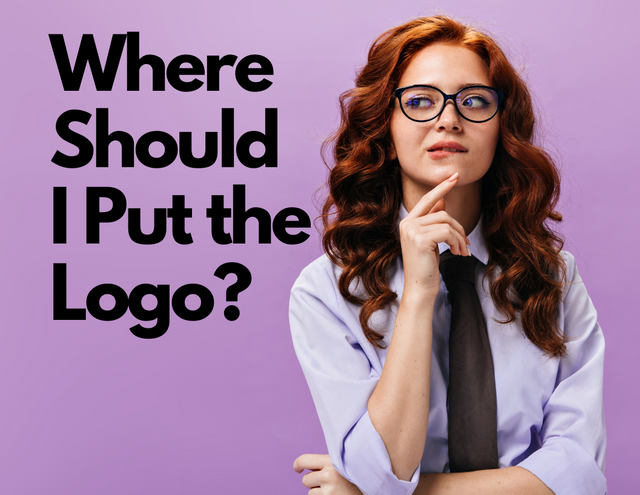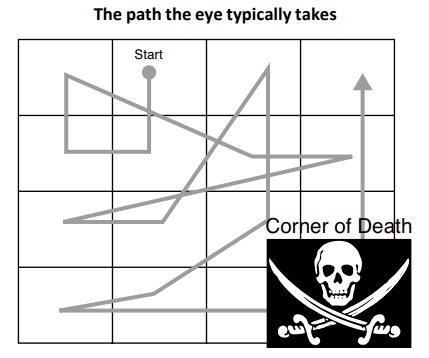
Most of you often have conversations with clients regarding the placement of their logo on print/digital ads. The impact of a logo on human memory is astounding. It either stays in people's minds or disappears from them depending on where it is placed. With the wrong placement, sophisticated or lovely designs may be considered ineffective.
Perhaps one of the most important aspects of any type of ad is that the brand it is associated with be recognizable. This is especially true for ads that are seen for mere seconds.
Most of the ads are designed only with the goal of brand recognition. These advertisements lack a call to action and consist of simply a logo or a combination of a logo and a related brand message.
The worst place to put your logo in ad design
Where do most designers and advertisers put their logo in print ads, digital ads, TV spots, and direct mail, etc? It is a lower right corner. Interestingly it is also the worst place to put your logo. Yes, you heard it right.
“I refer to the lower right-hand corner as the corner of death. That’s because as the pathway chart shows, it’s the second-to-last place we look. That’s right: second to last when you’ve got only 1.7 seconds to connect. And yet it’s the first place agencies put their clients’ logos for all ads executions except TV spots, as we found from checking out advertising examples from projects that we’ve done in recent years. Dan Hill (About Face)
Meanwhile, another study provides guidance on the typical pattern that the eye travels in absorbing a home-page layout (time duration not specified). Notice the pattern.3

these studies, Hill claims that the bottom right corner is by far the most prevalent single position for the key logo/brand identification use in all forms of advertising.
A branded offer can make you money, an unbranded design surely won’t. In other words, your logo in the lower right corner typically gets seen too late in the visual scanning process.
How long the logo will be visible to the viewer of your ad?
In a recent article, Hill says: If we take print ads as an example, you’ve got 1.7 seconds of average viewing time, per reader. And the lower right-hand corner is typically the second to last place people look on a page. (What’s even worse in terms of timing, along the upper-right edge, i.e., the alley of death.) What you don’t see, you don’t get. [From Mediapost – The 6 Secrets of Eye-tracking by Dan Hill.]
In a print or static ad (magazines and newspapers), the average time spent looking at a print ad is less than two seconds. YES, 2 SECONDS only.
A European study involving 1,300 print ads and 3,600 participants found the average to be exactly 1.7 seconds: with 0.6 seconds devoted to imagery, 0.7 seconds devoted to text, and 0.4 seconds to noticing a company’s logo. Moreover, in testing across the three elements of brand, imagery, and text, here’s what that study also found. When logo size goes up, text attention loses out more than the imagery. When text size increases, the imagery suffers. But when the imagery expands in size, the other two elements are only marginally harmed, making prominent imagery the best way to go.1
The identity of the sponsor or brand often goes unnoticed. I refer to the lower right-hand corner as the corner of death. That’s because as the pathway chart shows, it’s the second-to-last place we look. That’s right: second to last when you’ve got only 1.7 seconds to connect. And yet it’s the first place agencies put their clients’ logos for all ad executions except TV spots, as we found from checking out advertising examples from projects that we’ve done in recent years, says Hill
However, in the case of digital signage, the customer may have only a matter of around 20 seconds to view your ad. The attention span of many users is even less on a webpage where it could be as little as six seconds.2
Best place to put your logo –
Hill says that the best place is the lower middle part of the page or layout, At that point, the viewer will have engaged emotionally with the leading part of the ad, and will then have the opportunity to associate the brand with solving a problem or satisfying consumers’ wants.
Predictive Neuro Tools
Predictive eye-tracking backed by neuroscience and AI helps designers, marketers, and brands to create smarter designs. Dhiti simulates human vision and predicts what people will automatically see or miss in the first few seconds. It predicts where users will focus their attention on your design. Try your own designs and get insights to make data-driven design decisions
References –
- Tellis, G J (2004) Effective Advertising: Understanding When, How, and Why Advertising Works, Sage Publications: Thousand Oaks, CA
- http://www.signspan.com/2018/03/branded-proper-use-logo-branding-ads/
- Ries, A and Ries, L (2004) The Fall of Advertising and the Rise of PR, Collins: New York.